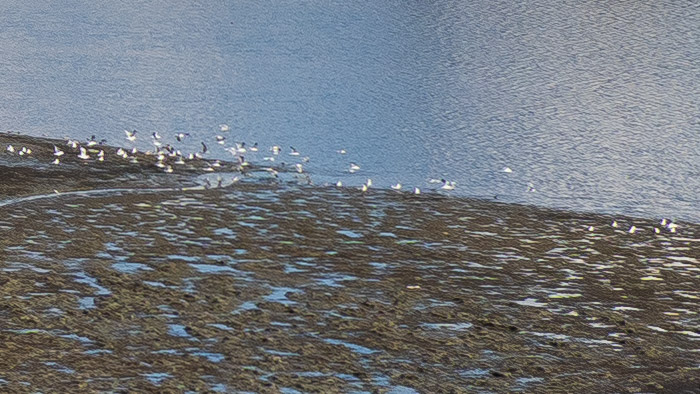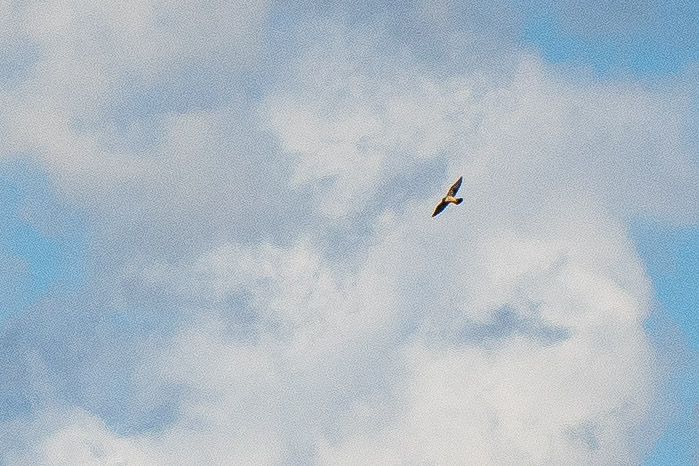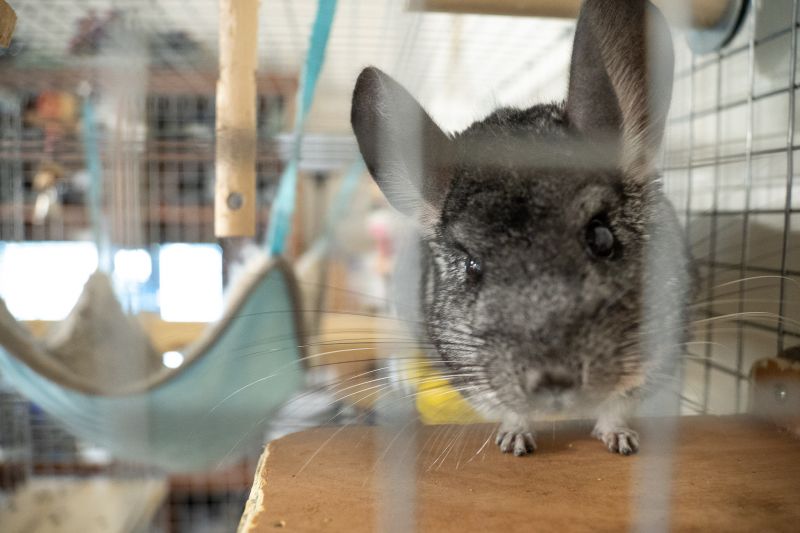
If you want a constant f/2.8 zoom lens for your crop-sensor Sony camera with more range than ever before, pay attention! Tamron just delivered a 17-70mm f/2.8. Yes, that’s right, a constant f/2.8 zoom, that gives the equivalent reach of 105mm!
With the most zoom range of any f/2.8 zoom we know of, at a whopping 4.1X, this lens is truly unique. It’s compact, affordable, and yes, the image quality is truly impressive.
But, here’s the real reason why your eyebrows should perk up at the idea of this lens: if you’re thinking of using a full-frame Sony camera, with a lens like the Sony 24-105mm f/4, …this Tamron will give you the same “light-gathering” capability, but in an affordable, portable APS-C package! That’s right, this lens might cure you of the “need” to lug around a heavy, expensive full-frame camera.
Now, do we have your attention? Read on, and this will review will show you that it’s not too good to be true…
Tamron 17-70mm f/2.8 Di III-A VC RXD Specifications

- FOCAL LENGHT & ANGLE OF VIEW: 17-70mm, (25.5-105mm full-frame equivalent) 79°- 23°
- LENS MOUNT(S): Sony E-mount (APS-C only)
- APERTURE & RANGE: f/2.8-16
- STABILIZATION: Yes, Tamron VC Vibration Correction
- AUTOFOCUS: RXD stepper motor
- MANUAL FOCUS: Yes, electronically controlled
- OPTICAL CONSTRUCTION: 16 elements in 12 groups, 2 molded glass aspherical, 1 hybrid aspherical, 2 low dispersion, BBAR coating
- MECHANICAL CONSTRUCTION: Metal & plastic, weather-sealed
- MAGNIFICATION & FOCUS DISTANCE: 0.21x, 7.5 in (19 cm)
- FILTER THREADS & HOOD: 67mm filter threads, plastic one-piece hood
- SIZE: 2.9 x 4.7 in. (74.6 x 119.3 mm)
- WEIGHT: 1.2 lb (525 g)
- PRICE: $799 (B&H | Adorama | Amazon)
Tamron 17-70mm f/2.8 Di III-A VC RXD Review | Who Should Buy It?
Well, who wouldn’t want a portable, affordable, constant f/2.8 zoom that delivers impressive results? This lens is perfect for almost every type of photography! Whether you’re a photography beginner just looking for the best all-around zoom to go with your Sony A6100, or you’re a serious professional looking to make a highly capable backup kit with your A6600, this lens could be perfect for you.

The unprecedented zoom range and fast aperture make it a great lens for things like portrait and wedding photography, or any type of photography that involves low-light action or journalism where a mid-range f/2.8 zoom would usually shine. Plus, unlike both the Tamron and Sony full-frame f/2.8 mid-range zooms, the 17-70 has VC stabilization! (By the way, this Tamron costs about $600 less than Sony’s own E 16-55mm f/2.8 G, or $500 less even when the Sony is on sale.)
The incredible image quality and that substantial zoom range make the 17-70mm f/2.8 a great lens for travel, landscape, cityscape, and all types of photography where either portability or image quality is important.
Video shooters will find the lens to be perfectly sharp for 4K video, and the autofocus to be nearly silent and very smooth. Its size and weight also make it a perfect candidate for your lighter weight gimbal rigs, or as a quick, portable B-roll or time-lapse camera!
And, speaking of image quality, yes, the Tamron 17-70mm f/2.8 is good enough for some of the most challenging types of photography, such as nightscapes or even deep-sky astrophotography!
Tamron 17-70mm f/2.8 Di III-A VC RXD Review | Pros & Cons
If you’ve been paying attention to all of the full-frame Tamron E-mount lenses that have been coming out in the past few years, then you might be able to guess what I’m about to say: This 17-70mm has amazing image quality, autofocus that works reliably, and a minimal physical design that isn’t “indestructible” but still surprisingly quite nicely made.
But, wait! Unlike the other f/2.8 zooms from Tamron, this one has VC stabilization! That’s pretty awesome, indeed. (It was actually a little weird to see “SteadyShot: On” in the icons on the Sony A6100!)
Image Quality




Image quality is just shockingly good. Not just, “good for a lens this compact”, it’s actually as good as any flagship f/2.8 mid-range zoom we have ever reviewed, and actually, we’ve reviewed all of them now!
[Related: Mirrorless 24-70mm f/2.8 shootout!]
Sharpness




The only time a faint bit of sharpness loss is at all noticeable is in extremely harsh edges of contrast, at th edges and corners of the frame, such as above. Even then, the actual level of image detail is great; and Lightroom’s built-in chromatic aberration correction tool does its job very nicely.


From wide to telephoto, the entire image frame is incredibly sharp, even at f/2.8. This is flagship level, $2,00 lens performance here, folks.
Bokeh

Quite unprecedented for a crop-sensor zoom, the shallow depth you get from an f/2.8 long end of a mid-range zoom is very impressive, and the character of the bokeh itself is truly pleasing.

See the first example below to understand what a night-and-day difference there would be between this Tamron and, say, any other “kit” lens that stops at 50mm and also is “stuck” at f/5.6.


Colors & Contrast
As you can see from all the sample images, there’s nothing to complain about here; Sony has been playing nice with Adobe lately, and third-party lenses haven’t been giving us any odd color casts in quite a while. In other words, even shooting RAW instead of JPG, you will get more beautiful images out of this lens than ever before with third-party lenses.
Vignetting & Distortion
Vignetting is minimal, thanks to a pretty good in-camera correction profile that is applied to both RAW and JPG images.
We’ll touch on this again later, but unfortunately, the lens is not usable on full-frame at any focal length. In other words, if you mout this lens on a Sony A7 III or A7R IV etc, you’ll have to crop to Super 35 mode.

Oddly, when testing this out and turning off the correction profile, we noticed that by default the cropped, 17mm image was overall brighter than the un-cropped, un-corrected, full-frame test image. Does this mean that Tamron/Sony are “faking” the brightness of f/2.8, and applying an in-camera light transmission correction to the entire image, not just the corners? We will have to do extensive testing to find out, but suffice it to say, “baked in” vignetting profiles are something we’ve been skeptical of since they first appeared, and we are not ready to fully trust them just yet. Stay tuned for more content about mirrorless lenses in general.
Sunstars & Flare

Flare is very minimal, sunstars are present at small apertures and very well-defined, though not old-school pin-points.
Color Fringing, Aberration, Coma & Astigmatism


For nightscape photographers, you can expect there to be shockingly minimal levels of aberrations even in the extreme corners, whether you’re shooting at 17mm or 70mm, even when looking at the edges and the corners of the image.
Macro & Close-Up Photography

Up-close, the Tamron 17-70mm f/2.8 is just a touch softer than at normal distances, and the close-focusing distance changes when zooming. Either way, it’s close enough, and sharp enough, to make a decent close-up lens for casual work. Oh, and did we mention that gorgeous bokeh when doing close-up photography work?
Design & Durability

[Related: Tamron 70-300mm f/4.5-5.6 Review | Another lens we’ve all been waiting for!]
As with all of Tamron’s E-mount lenses so far, the overall build quality and construction is impressively solid, but not exactly Sony GM quality, indeed. The plastic finish will show signs of wear rather easily, however, actual wear and tear should be minimal even if you’re abusing the lens.
Speaking of abuse, the Tamron 17-70mm f/2.8 is weather-sealed, so if you’re out traveling, vacationing, or adventuring, and it starts to rain, you won’t have to “baby” your camera gear very much; you should be fine using the lens in inclement weather conditions.
Also, in keeping with the rest of Tamron’s E-mount zoom lineup, there’s one advantage of universal, compact 67mm threaded filters, however, there is also the drawback of no AF/MF switch, no L-Fn button, and no other “frills”, of course; this lens has rather spartan looks and functionality in terms of physical features.
Autofocus & Manual Focus Performance

Autofocus is virtually silent, and both fast & precise. As a lens with a smaller optical circle to project, the glass is just easier for the RXD AF motor to push back and forth, making the lens delightfully snappy to focus, and ready to take full advantage of Sony’s impressive AF RealTime tracking system.
When using Manual focus, the focus ring is highly responsive and capable of extreme precision.
Value
Basically, Tamron has continued making all the right compromises in order to bring the hands-down best value in its lens class. That is, it’s incredibly sharp, has great autofocus, and a generally “no-frills” feature set beside those two most important aspects of performance. The lens is built solidly enough (and is weather sealed) so in the long run, year after year, your investment will be well worth it.
Tamron 17-70mm f/2.8 Di III-A VC RXD Review | Compared To The Competition
The Tamron 17-70mm f/2.8 stands alone in its class; there is no real direct competition when you consider both its zoom range, aperture, and price range. There’s just no other lens that offers this zoom range and an aperture of f/2.8! If you know you want these things, you probably stopped reading this review and clicked “add to cart” long before getting to this point.
But, just for the sake of comparison, what else is out there? If you want f/2.8, the closest alternative is the Sony E 16-55mm f/2.8 G. It sits at $1,398, (or goes on sale for $100 off at times) and only goes to 55mm on the long end. Oh, and it lacks optical stabilization, which might be a deal-breaker for those of you without a Sony A6600 or another APS-C Sony camera with IBIS.

However, it (the Sony) does go to 16mm on the wide end, which makes quite a difference if you’re doing tons of close-quarters wide-angle work. (Then again, I wouldn’t be surprised if the very next lens Tamron made was a 10-17mm f/2.8 for Sony APS-C, too!)
On the other hand, If you want zoom range with an emphasis on “reach”, plus you still want good image quality, the most attractive competitor might be the Sony E 18-135mm f/3.5-5.6 OSS, a lens that forfeits yet another millimeter on the wide end in exchange for a much longer telephoto end. In terms of aperture, you are making quite a compromise by going from f/2.8 to f/5.6 on the long end. You do have OSS stabilization which can help, but won’t do anything for fast-moving subjects or shallow depth like f/2.8 can.
Want my own personal opinion? You should just get the Tamron. Also, I honestly recommend that you just stay away from the Sony/Zeiss 16-70mm f/4, by the way. It costs more, doesn’t go to f/2.8, and is not nearly as sharp as the Tamron. Similarly, the Sony E PZ 18-105mm f/4 G OSS is nice because it has a video-oriented zoom system, but it’s just not nearly as modern as the Tamron.
All in all, there’s not much to debate here. The bigger question is, do you want what this lens offers you? As I mentioned before, you might worry about missing one millimeter on the wide end. In most real-world conditions, it won’t matter. Plus, for those very serious about landscape or nightscape photography, the difference between 16mm and 17mm is nothing compared to just waiting to see if Tamron delivers an imaginary 10-17mm f/2.8. Or, of course, just buy a tiny, portable, ultra-wide prime like the Rokinon/Samyang 12mm f/2, and you’ve got all your astro-landscape photography bases covered!
Of course, you might also be hesitant to buy a crop-sensor lens if you think you’ll plan to upgrade to full-frame someday, for the increased light-gathering ability. But, ask yourself, is full-frame even worth it anymore if you’re not going to actually invest in bigger, heavier, faster lenses? Again, all you have to do is pair this Tamron with a fast prime or two, whether APS-C or full-frame, and you’ll get plenty of beautiful low-light images from the latest Sony APS-C sensors. Lenses like the Sanyang AF 35mm f/1.8 FE are affordable, too, ($399) and incredibly portable, too, despite being made for full-frame cameras!
[Related: Samyang AF 35mm f/1.8 FE Review | Lightweight, Compact, Affordable Prime]
Either way, this is the first, and the best, lens you should consider for your Sony APS-C kit. In fact, as we’ve already said, this lens is so good, it should have you re-thinking whether or not you even need a full-frame setup! Because if you were planning on mostly using f/4 or variable aperture zooms on full-frame, this lens, will help you get similar (or better!) results.
[Related: Tamron 28-200mm f/2.8-5.6 Review | The Superzoom, Reimagined]
Tamron 17-70mm f/2.8 | Does It Work On Full-Frame?
One question that we are inevitably going to be asked is, of course, “does it work on full-frame Sonys?” Technically, yes, of course, it does. By default, all Sony full-frame mirrorless cameras will automatically detect when a crop-sensor lens is attached, and they’ll bump the sensor into APSC (Super-35) crop mode.
But, what if you want to force the camera to try to shoot the “full” frame, so to speak? If you’re like me, a thought crossed your mind: “What if I zoom in to 24mm, or 28mm; will the vignetting go away then? Can I get a usable full-frame lens of, say, 24-70mm?

The answer is, unfortunately, no, that’d be just too good to be true! The Tamron 17-70mm f/2.8 has significant zones of totally black corners throughout the entire zoom range.
This means you can throw the lens on a 40-60-megapixel full-frame Sony and get results with plenty of resolution, but if you’re going for a 24-megapixel full-frame Sony, you’ll be getting “only” ~10 megapixels once the sensor auto-crops in to Super-35 mode. Still more than enough for many things, but you won’t be taking full advantage of your full-frame sensor, of course.
What Will Tamron Do Next?
Honestly, with this amazing lens out,
Tamron 17-70mm f/2.8 Di III-A VC RXD Review | Conclusion


Tamron has done it yet again: they came up with a lens that nobody else has made, and they did it very well! Sony’s APS-C cameras themselves just became a more attractive choice, compared to their more expensive full-frame options.
If you’re looking for one of the best all-around zooms ever made for mirrorless cameras, period, look no further than the Tamron 17-70mm f/2.8 Di III-A VC RXD. Its image quality, portability, affordability, and total light-gathering capability are unmatched in its entire sensor class, and it makes an attractive offer to all types of photographers.
Check Pricing & Availability
The Tamron 17-70mm f/2.8 Di III-A VC RXD will be shipping soon, for $799, and is available here:
9.3 Score
Pros
- Incredible image quality
- Fast aperture for zoom range
- Highly portable
- Good build quality
- Impressive autofocus speed & reliability
- Incredible value
Cons
- 17mm, not 16mm, on the wide end of zoom range
- No AF/MF switch or L-Fn button
Final Verdict
This lens stands alone among all Sony E-mount APS-C lenses. It's so good, it actually gives full-frame equivalent lenses a run for their money!
Matthew Saville
Follow his wilderness nightscape adventures on Instagram: instagram.com/astrolandscapes




Get Connected!